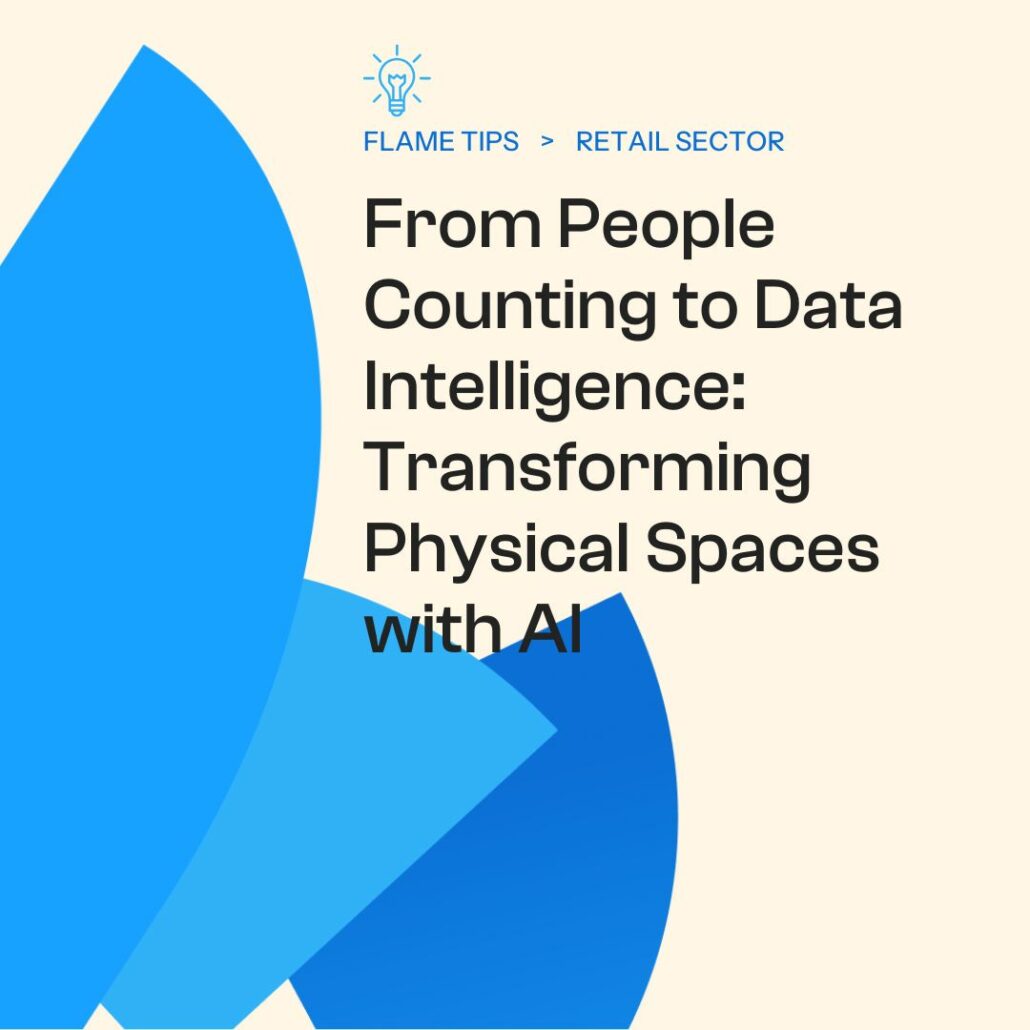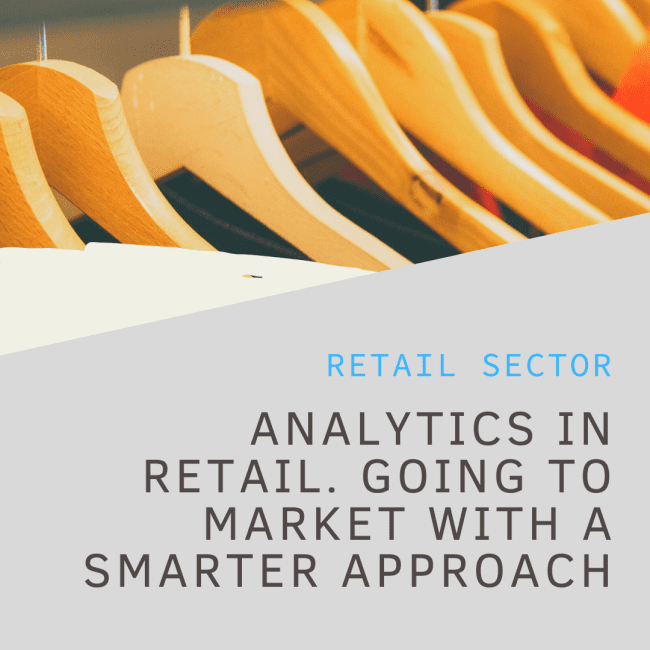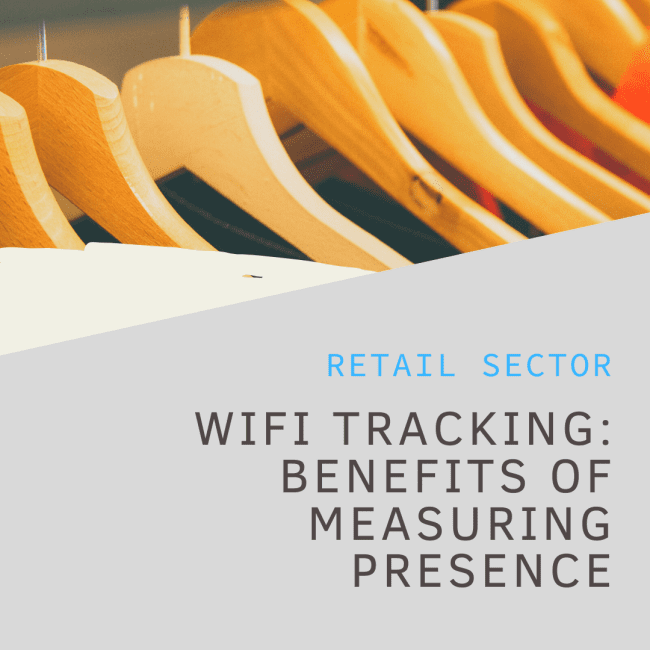We’re thrilled to share this insightful post authored by our CEO, Jonathan Solis. In it, he delves into a pivotal topic for the future of physical retail: moving from simple headcounts to a strategic approach rooted in data intelligence. Jonathan explores how this transformation is not just central to Flame’s mission of enhancing physical spaces through advanced analytics, but also an essential evolution for the entire retail sector in today’s digital-first world.
Enjoy his perspective on how AI is reshaping retail and bringing digital-grade insights to the physical store environment.
I have to admit that I’ve been wanting to tackle a topic I consider essential for the transformation of physical retail: moving from simply counting people to implementing data intelligence strategies.
This change is not only central to Flame’s mission—to transform physical spaces through data intelligence—but it also marks a necessary evolution in the retail sector to stay competitive in an increasingly digital world.
The Rise of E-Commerce and the Need to Evolve
According to eMarketer, global e-commerce sales are projected to surpass $6 trillion in 2024 for the first time, accounting for over one-fifth of total retail sales worldwide. This impressive figure demands reflection on the reasons behind such exponential growth.
E-commerce offers convenience, speed, and competitive pricing. But in my opinion, its superpower lies in the ability to measure every aspect of the customer journey with precision. From the pages users visit and the time spent on each section to products added to the cart and real-time conversion rates, e-commerce continually optimizes the user experience through real-time A/B testing to boost conversions.
Now imagine that a physical store could automatically adapt its design, layout, and product displays for different customer groups, testing in real time to find the most effective setup. This is a daily reality in the e-commerce world, but what about physical retail?
Physical Retail’s Stagnation in the Era of Measurement
In physical stores, outdated counting methods are still common, like auxiliary staff manually counting with clickers. This isn’t an exaggeration; it’s a reality I’ve seen firsthand in stores of well-known brands.
While counting technology has advanced over the past two decades, now offering systems with up to 99% accuracy, many stores are still limited to a single KPI: traffic or footfall. This raises a crucial question: Where are the advanced measurements we see in e-commerce? What about the in-store customer journey, dwell times, flow diagrams, and zone or category conversions? Although there have been attempts with technologies like Wi-Fi and Bluetooth, they have yet to offer a truly comprehensive solution.
Artificial Intelligence as a Catalyst for Transformation
Fortunately, we’re in the perfect moment to close this gap, thanks to the rise of artificial intelligence. While the term “artificial intelligence” was coined back in the 1950s, we are now witnessing unprecedented advances fueled by deep learning and massive cloud computing capabilities.
Classic machine learning relied on algorithms trained by experts using decision trees. For instance, to identify a car in an image, the algorithm would check for features like four wheels, an engine, and a steering wheel. However, the major breakthrough has been in developing systems that can learn independently by creating neural networks from large datasets.
This deep learning now enables the processing and analysis of complex information, such as images and videos, in ways that were previously impossible.
Applying AI to Physical Retail
At Flame, we have implemented AI models capable of analyzing customer behavior entirely anonymously, without using biometric features, and fully compliant with privacy regulations like GDPR. Our approach is privacy by design.
Our system can utilize an existing CCTV network to track customer movements and reidentify the same person across different appearances and cameras, allowing for a complete analysis of the in-store customer journey with unprecedented accuracy.
This provides us with data similar to GPS, capturing customers’ movement coordinates. With this information, detailed analyses are possible, such as visits and dwell times by zones, items with the highest engagement, and micro-conversions at the product level.
These raw data points are extremely precise and can answer almost any question through data analysis tools or even a general AI model, to which we could pose any query.
Analysis Levels and Practical Application
To conceptualize these capabilities, we’ve classified analysis levels into three categories, each offering greater detail and requiring different levels of sensor technology:
Level 1: Perimeter Counting
This is the most basic and fundamental level, measuring entry and exit traffic and providing demographic analysis and capture and conversion ratios. High-precision counting technologies and proactive equipment maintenance are essential to ensure data reliability.
Level 2: Zone Analysis
Offers greater detail by measuring traffic by floor and area within the store. This enables conversion and performance analysis of specific areas, optimizing product placement and displays.
Level 3: Individualized Customer Journey
The most advanced level, where each customer is tracked anonymously, analyzing their movements, dwell times, flow maps, and zone correlations. AI plays a crucial role at this level, providing deep insights that were previously exclusive to e-commerce.
This scalable model allows our clients to evolve gradually, adapting to their needs and resources while ensuring they remain one step ahead in innovation and competitiveness.
Conclusion: Toward a Comprehensive, Measurable Experience
Integrating AI into physical retail is not an option but a necessity to remain relevant in a market increasingly dominated by e-commerce. By adopting these technologies, physical stores can offer more personalized experiences, optimize operations, and—most importantly—measure and understand customer behavior with previously unimaginable precision.
This transformation is not only about adopting new technologies but also about shifting toward a data-driven culture. Only then can we close the gap between physical and digital worlds, offering customers the best of both.
At Flame, we are committed to leading this transformation, providing the tools and knowledge needed for physical retail not only to compete but to exceed expectations in the era of data intelligence.







